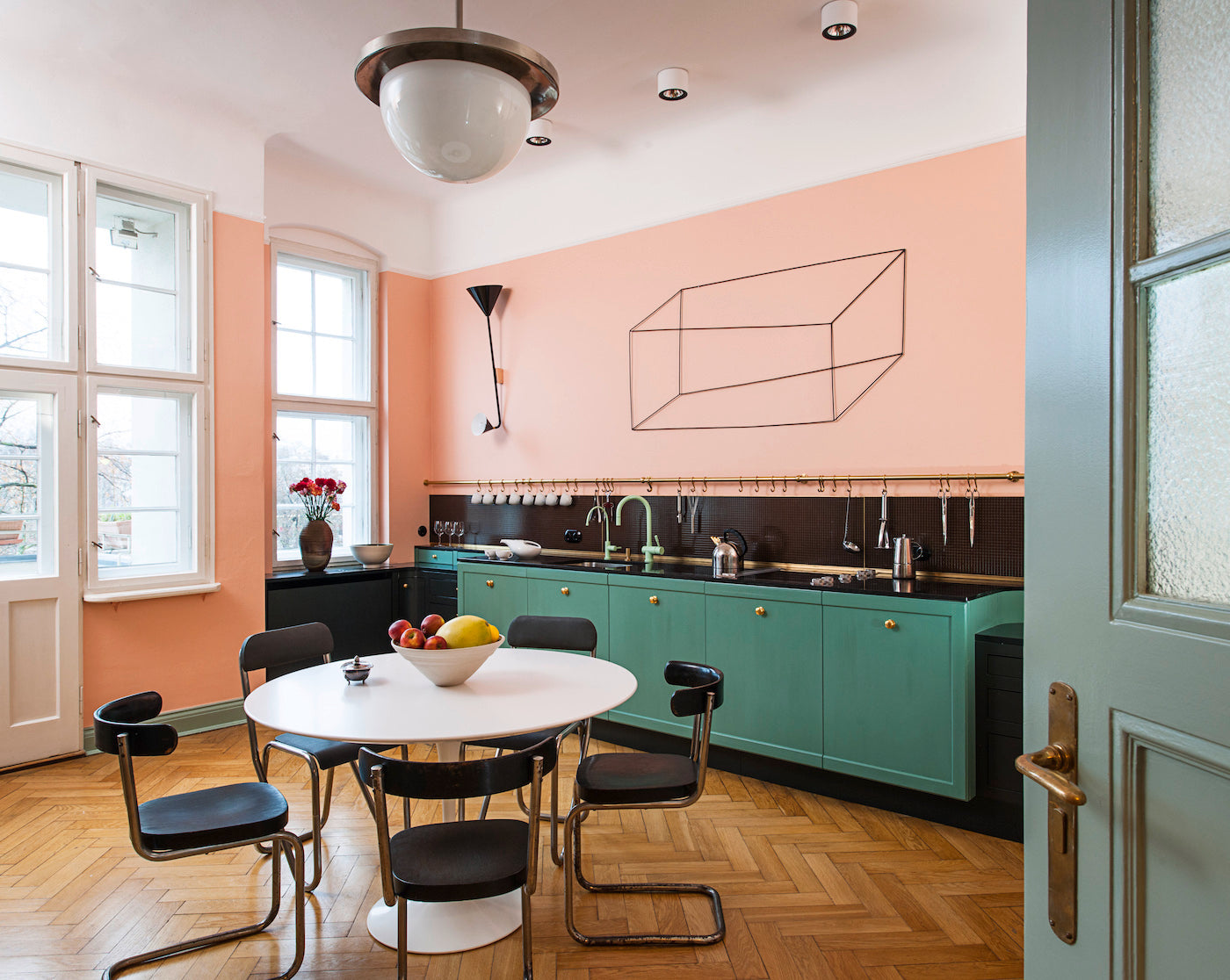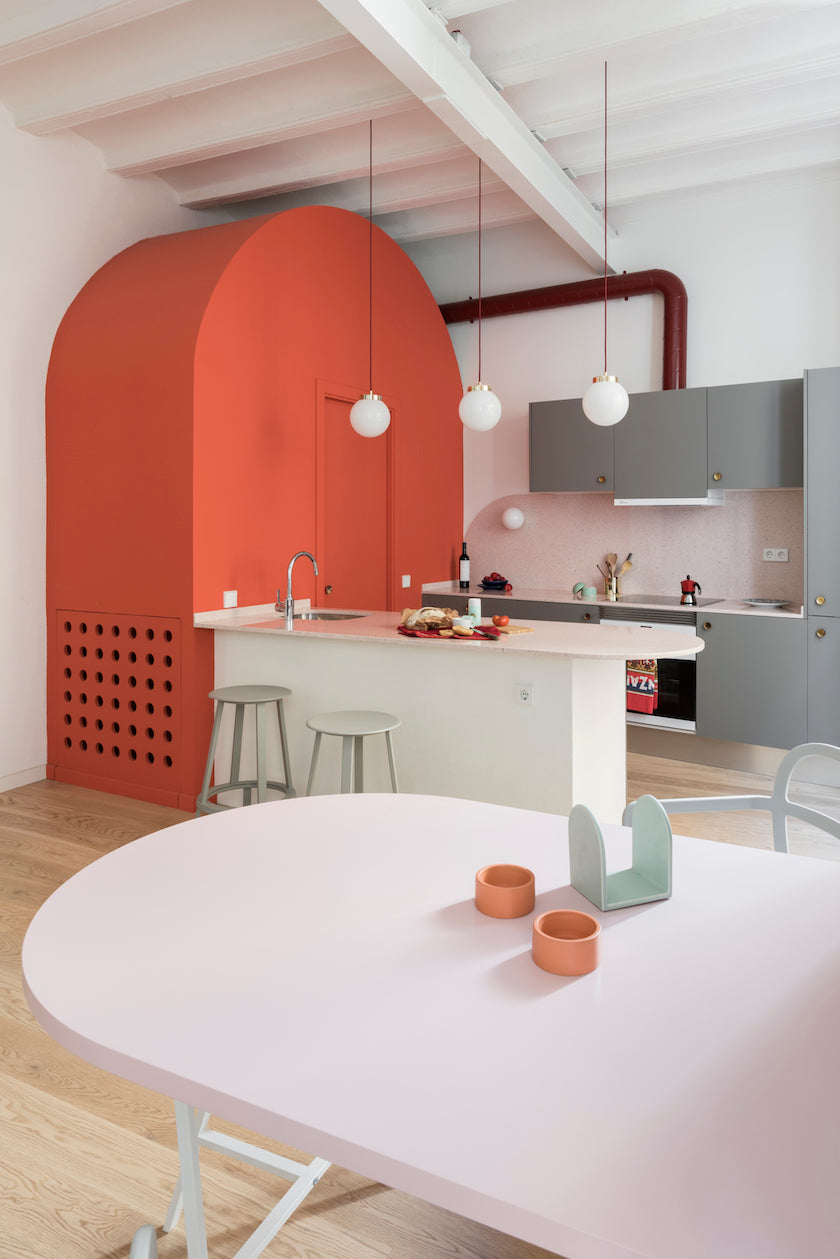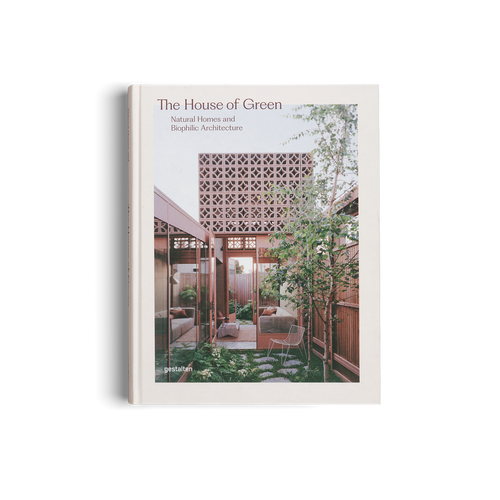
02/2019 architecture & interior food & beverages
Kitchen culture has become something so ingrained in daily life for most that some people reading this may struggle to recall an era where our life's at home didn't revolve around the kitchen. Of course, in homes where cookery had always been focal, kitchens were already the bedrock of entertainment and life. But until recent decades, the kitchen to some was simply a room for food preparation. Mina Holland, Deputy Editor of Guardian Feast, beautifully articulated the role of this now symbolic space in the preface of our Kitchen Living book, so we wanted to find out how food and writing became the tools of the trade.
Culinary experiences weren't narrowed down to the streets of Paris or the alleyways of Modena, instead, restaurant culture was being presented in our homes on IKEA-assembled surfaces
Regardless of your social class, kitchens were a space to chop and cook, while the entertaining happened somewhere else in the home. This was the case throughout much of history until World War I, but then something peculiar started bubbling up as the world became more switched onto cuisine and channeling their 'inner-chef.' Culinary experiences weren't narrowed down to the streets of Paris or the alleyways of Modena, instead, restaurant culture was being presented in our homes on IKEA-assembled surfaces. Mina was at the heart of the food and kitchen revolution, which she recalls first getting a taste of during a study semester in America, before later gripping the United Kingdom and beyond.

A beautiful Berlin home featured in our Kitchen Living book. Architecture agency Gisbert Pöppler, 'Heart of the Home,' photographed by Wolfgang Stahr.
From childhood culinary memories to designing her own interior, Mina tells us her cooking rituals, leaving a career in advertising behind, and the compromise that went into designing her home in south London.
"But it was when I moved to northern California for my third year of university that I became switched on to such a thing as ‘restaurant culture’ (the exchange rate was very good!) and to how our experience of food can be so enriched by eating seasonally"
Hey Mina, can you please tell us a little bit about your childhood and route into writing and food?
My life ticks to the rhythm of mealtimes for as long as I can remember. By that I mean that food is never incidental to my day; for me, life is to a large extent structured around what I’m going to eat, when, where, with whom, and–if I’m cooking something–where I’ll get the ingredients and how I’m going to make it. Whatever you want to call that–obsession, greed, control freakery–I think that’s how I got into food. Because, in many ways, there’s nothing else really: food sits at the center of everything and touches on so much–people, politics, community, farming, ethics, history, storytelling, emotional highs, and lows… I always loved cooking, and reading about food (I came of age with Nigella Lawson’s early books), but it was when I moved to northern California for my third year of university that I became switched on to such a thing as ‘restaurant culture’ (the exchange rate was very good!) and to how our experience of food can be so enriched by eating seasonally. I found that really inspiring. I returned home in 2007 when Britain was just starting to become switched on to what homegrown produce and chefs had to offer. Although the likes of Fergus Henderson had been banging on about this stuff for years. There was a movement picking up traction, and it was a world I wanted to be a part of.
After studying English at the University of Leeds, I started my career as an account manager in advertising, which was relatively short-lived. I missed reading and writing! And, creatively frustrated, found myself cooking a lot, then blogging about it, usually inspired by whatever book I was reading at the time. I was still young enough to jump ship and start again, and luckily my parents live in London, so I could move back in with them while I interned on the food desks at various publications, including Observer Food Monthly. With a friend, I launched a supper club off the back of my blog–fiction-inspired events–called The Novel Diner. From thereon, food and words were my things.
"I always think that if a piece of food writing makes you want to cook and propels you into the kitchen, then it served its purpose"

The curvaceous kitchen that Colombo Serboli Architecture designed for this centuries-old building in Barcelona. Featured in our Kitchen Living book, this space was photographed by Roberto Ruiz.
What food were you raised on…
A mixture of classic British family food with a vegetarian bent and what, at the time, felt a bit more experimental or exotic. My mum’s go-tos were The Cranks Recipe Book, Madhur Jaffrey, Rose Elliot, and Delia Smith for cakes. We didn’t eat out in restaurants very often and my parents both worked full-time, so there was always an emphasis on balancing what was convenient with what was healthy. My mum and I were vegetarian throughout my childhood (I eat a small amount of meat pretty fussily now), so TVP (Textured or Texturized Vegetable Protein) and soya featured a lot, and I remember the thrill when paneer and tofu started appearing on our plates. Baked potatoes were always a staple. And my grandmother grew up in India, so dishes like kedgeree and dahl made regular appearances. We weren’t strangers to spice.
Looking back though, I think the vegetarian thing made me a more daring eater and, later, cook. In those days, veggies weren’t spoilt for choice like they are now, so you had to think a bit more creatively if you loved food and wanted to have a varied diet.
"If you’re buried in a hidden kitchen, cooking might mean you miss out on conversations, dynamics, and goings-on, so having one that’s open plan, or that invites people to spend time there, allows more of life to take place within it"
Reading, writing, and eating: You get to combine some of life’s greatest pleasures together as a career. What do you think makes a great food writer and storyteller?
I always think that if a piece of food writing makes you want to cook and propels you into the kitchen, then it served its purpose. Although many people–myself included–also read about food for entertainment, without necessarily intending to cook, so that can’t be the only criteria. I know what appeals to me most as a reader is when the writer taps into universal truths while revealing the little personal details about themselves, their appetites, their kitchen. I also, of course, want to learn. I think for all of these reasons that one of the great food writers is Rachel Roddy, our columnist at The Guardian. I’m also a fan of Laurie Colwin, Diana Henry, Samin Nosrat, and Jane Grigson, to name just a handful.
In the book’s preface, you touch on the evolution of the kitchen from a hidden place in the past to the pulse of modern life. Why do you think its role has changed, and what has helped fuel this new identity?
Upstairs/downstairs culture doesn’t exist in the way it once did, if at all. We all have to take responsibility for feeding ourselves now. That means cooking, or at least some food preparation. If you’re buried in a hidden kitchen, cooking might mean you miss out on conversations, dynamics, and goings-on, so having one that’s open plan, or that invites people to spend time there, allows more of life to take place within it. I think that’s become something we actively enjoy, it certainly is for me. I love to potter around my kitchen cooking while people are in there talking, drinking, and having a good time. It’s a multitasker’s dream!
How would you describe your style of cooking, and does your kitchen reflect that?
I like to cook as seasonally as possible (championing whatever’s grown close-by at a moment in time), with an emphasis on vegetables, and resourcefully, with meals that can be eked out and reinvented until they’re all gone. I think that’s probably as much of a style as I have. I go through phases of cooking from particular cuisines a lot. Right now, I’m pregnant and have had a serious umami craving, so I am really enjoying Japanese ingredients and exploring new combinations of them.
Refurbishing your home was a joint effort between you and your husband Freddie, which you previously said was nice because you ended up with something neither of you would have done on your own. Did you blend different sources of inspiration together or try to create something completely new?
It was nothing so thought-through as that! There were certain things we agreed we wanted–like a concrete worktop, skimmed plaster walls, capitalizing on natural light and lots of storage, and then there were things we needed to negotiate on. I was more drawn towards using color boldly, for example, whereas Freddie favored a neutral palette. So the splashback was his concession to my love of tiles and statement color. I think he felt a little tentative but loves it now. Freddie thought a lot more practical than me about functionality and where things would live–which is really important when your home is only 750 square feet (approximately 70 square meters). So I massively appreciate the thought he put into that side of things (which I neglected) now that we are living in the place.

A splashback of color and vibrant tiling is something featured throughout the book. An example is the stunning Valetta House in London designed by Office S&M, which was photographed by French + TYE.
“Somewhere to gather, to host, to toast, to make introductions, to feed, to the potter, to laugh, discuss, to quarrel, to learn, and to express ourselves,” is how you describe the kitchen in the preface. We have a new appreciation for food and what’s cooked on the countertop is now global, is this what’s influencing a new age of kitchen interiors?
Absolutely. I think there’s a new enthusiasm for cooking and so it stands to reason that we’d want practical, ergonomic, and pleasing spaces in which to do it, not to mention in which to enjoy the results!
Do you have a signature dish since moving into your place?
We were given a Big Green Egg ceramic Manado barbecue last year and that has been the starting point for many meals. We’ve done lots of Middle Eastern inspired meals, especially in the summer when we could open the kitchen door onto the garden, and it became like an extension of the flat–things like whole roasted cauliflower or yogurt-marinated chicken kebabs with tahdig crispy Persian rice, borani dips, and fattoush salads. I’m a big fan of my columnist Anna Jones’ leek and tomato croustade, a great vegetarian centerpiece which uses up old breadcrumbs, frying them with garlic and herbs, then layering these with leeks in mustardy béchamel and a tin of cherry tomatoes. And more cheese on top! That’s become a favorite since we moved in.
In terms of signature workaday meals, you can’t beat pasta Pomodoro, which we have a lot. I think it would be my last meal. Certainly, it’s my favorite thing to eat.
From kitchen designers to food writers to photographers, Kitchen Living goes on a voyage through the kitchen interiors that inspire the people who have made food their life.












